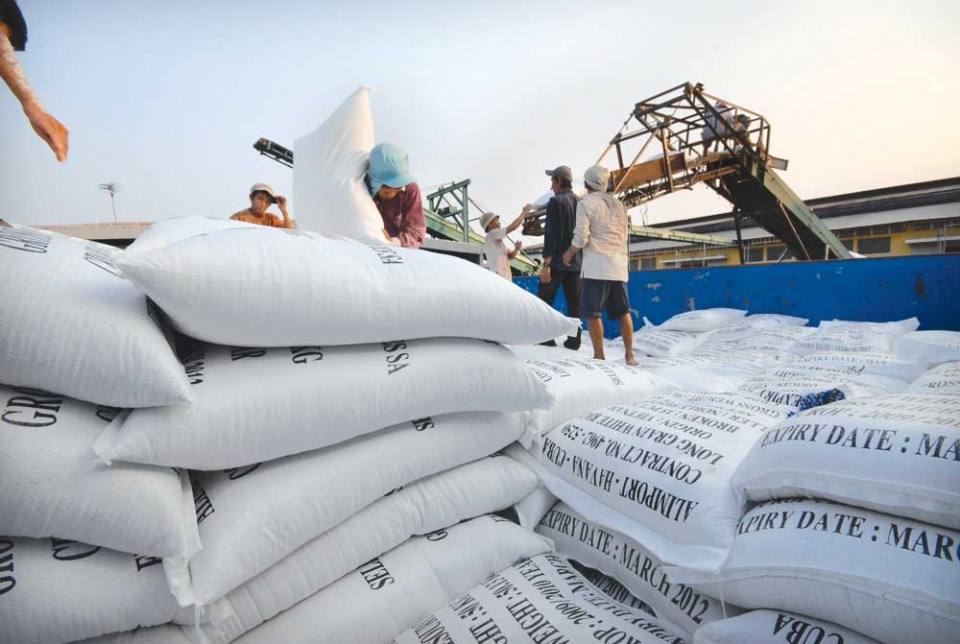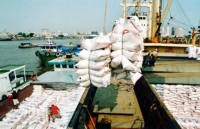
Superior quality rice yields hope for Vietnamese farmers
Latest
| Vietnam firms win bids to sell rice to Philippines | |
| Vietnam to be among world’s largest rice producers: FAO |
The European Union will offer the Vietnamese rice segment import duty-free tariff rate on increased quotas when the EU-Vietnam Free Trade Agreement comes into force, which should happen sometime in 2018, said Tran Ngoc Thach, director of the Mekong Delta Rice Research.
Therefore, Mr. Thach advises the segment to change production practices post haste to fully capitalize on the advantages posed by these beneficial quotas and lower border taxes.
According to the Agreement as approved by the Delegation of the EU to Vietnam, the European states will permit duty free import of 30,000, 30,000 and 20,000 metric tons milled rice, fragrant rice, and husked rice, respectively.
The agreement also provides for a 50% reduction in tariffs on broken rice with the remaining tariff phased out over a five-year period, noted Mr. Thach.
 |
| The Vietnamese industry targets US$3.5 billion of rice exports by 2020. (Photo: Dautu) |
He emphasized the point that many experts believe that the preferential border tax could potentially save the Vietnamese rice segment US$20 million annually, which is a tremendous savings.
Mr. Thach continued to say that though Vietnam has been hailed as the globe’s third largest rice exporter, its rice consignments to the EU over the past few years can be described as lackluster at best.
He noted that over recent years, Vietnamese rice exports dipped because far too many actors in the segment focused too much on planting high-yield rice. Meanwhile, other countries are concentrating on higher-quality rice production.
According to a report by the Vietnam Food Association, Mr. Thach said, that rice exports to the EU market dropped from 24,000 to 20,000 metric tons in 2014, a further 18,000 tons in 2015 and again in 2016.
The EU is a demanding market with strict requirements for factors ranging from product quality to environmental standards as well as the brand prestige and production process, Mr. Thach said.
In addition, though not being regular rice eaters, EU customers prefer rice of higher quality than Vietnamese rice. That’s why Vietnam has become less competitive against other rice exporting nations.
It is no secret that European consumers are fonder of fragrant rice from Thailand, while the Vietnamese rice segment is only now just beginning to focus its efforts to elevate its image, Mr. Thach concluded.
Huynh Van Nghiep, deputy director of the Mekong Delta Rice Research Institution, in turn said it is hard for the Vietnamese industry to compete on an equal footing with Thailand, but the country can learn from the experience of Cambodia.
The Cambodian rice segment is on the mend, Mr. Nghiep noted, due to its winning the world’s ‘best rice’ title for three consecutive years.
He suggested if the Vietnamese segment would switch away from growing high-yield and short-term rice varieties that the improved production practices would help create better tasting varieties of rice.
Therefore, to better compete with other countries in the Asian region, farmers and other actors in the industry should expeditiously shift from high-yield to superior-quality rice varieties, Mr. Nghiep said.
The Ministry of Industry and Trade has unveiled a strategy for developing rice exports in 2016-20 that targets reversing a declining trend over the last two years and increasing overseas sales to US$3 billion in 2017.
It also targets a gradual shift towards export of high-quality, high-value, organic, nutritional, specialty and Vietnam brands of rice and rice-based products.
The export of low-quality white rice is expected to fall to 15% of total shipments by 2020 and 10% by 2025.
In the latter year medium-quality white rice will account for 20% and high-quality white rice, fragrant rice and glutinous rice for 60%.
The ministry will make efforts to diversify export markets, with a focus on markets with demand for high-quality rice. The ministry has sent the draft strategy to relevant ministries and industries to solicit their opinions.
 | Huge potential for Vietnam’s rice exports to Singapore There remains considerable potential for Vietnam to export rice to Singapore, according to a Vietnamese delegation which visited Singapore in early August to seek ways ... |
 | Vietnam, Pakistan, Myanmar to drive 2018 global rice exports Global rice trade has been projected to increase 1% to 42.3 million metric tons in 2018, the third highest on record and the second consecutive ... |
 | Rice exports to Russia shoots up 700 percent Vietnam exported more than 14,700 tonnes of rice worth 5.56 million USD in the first five months of this year to Russia, a year-on-year increase ... |

























